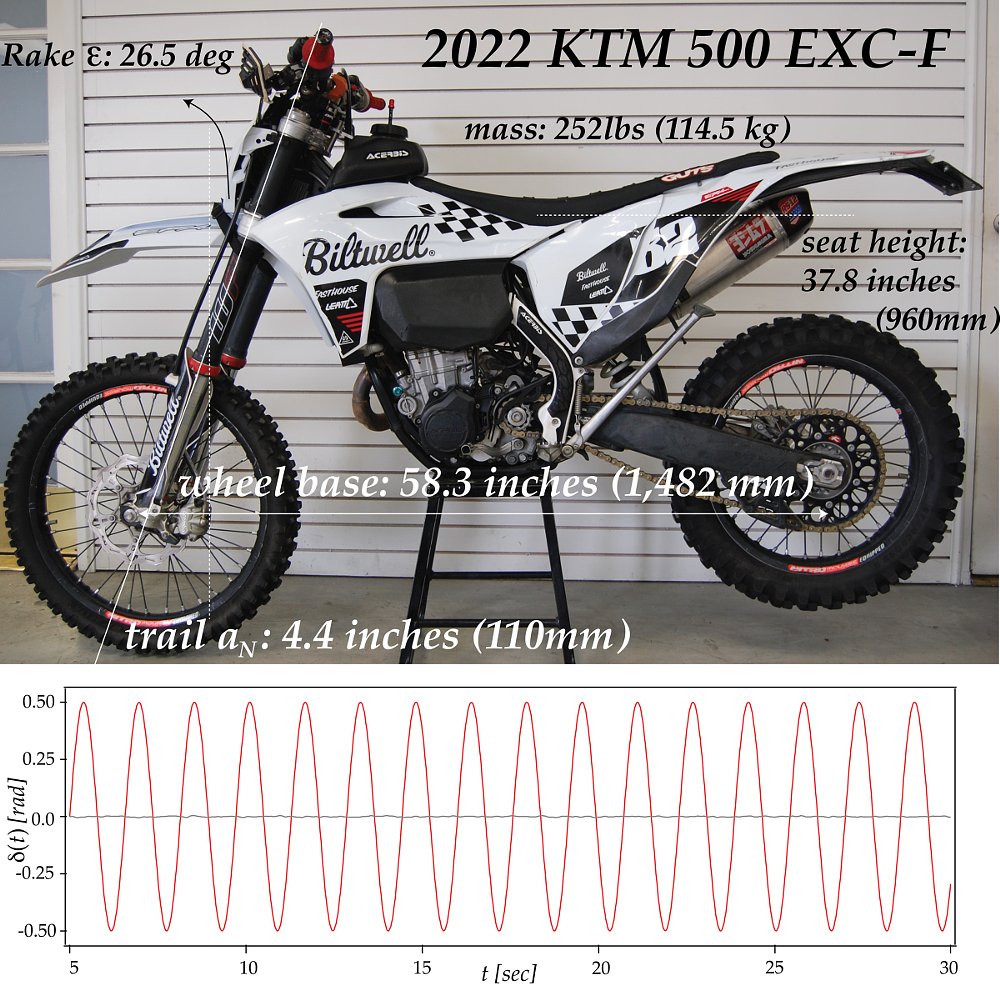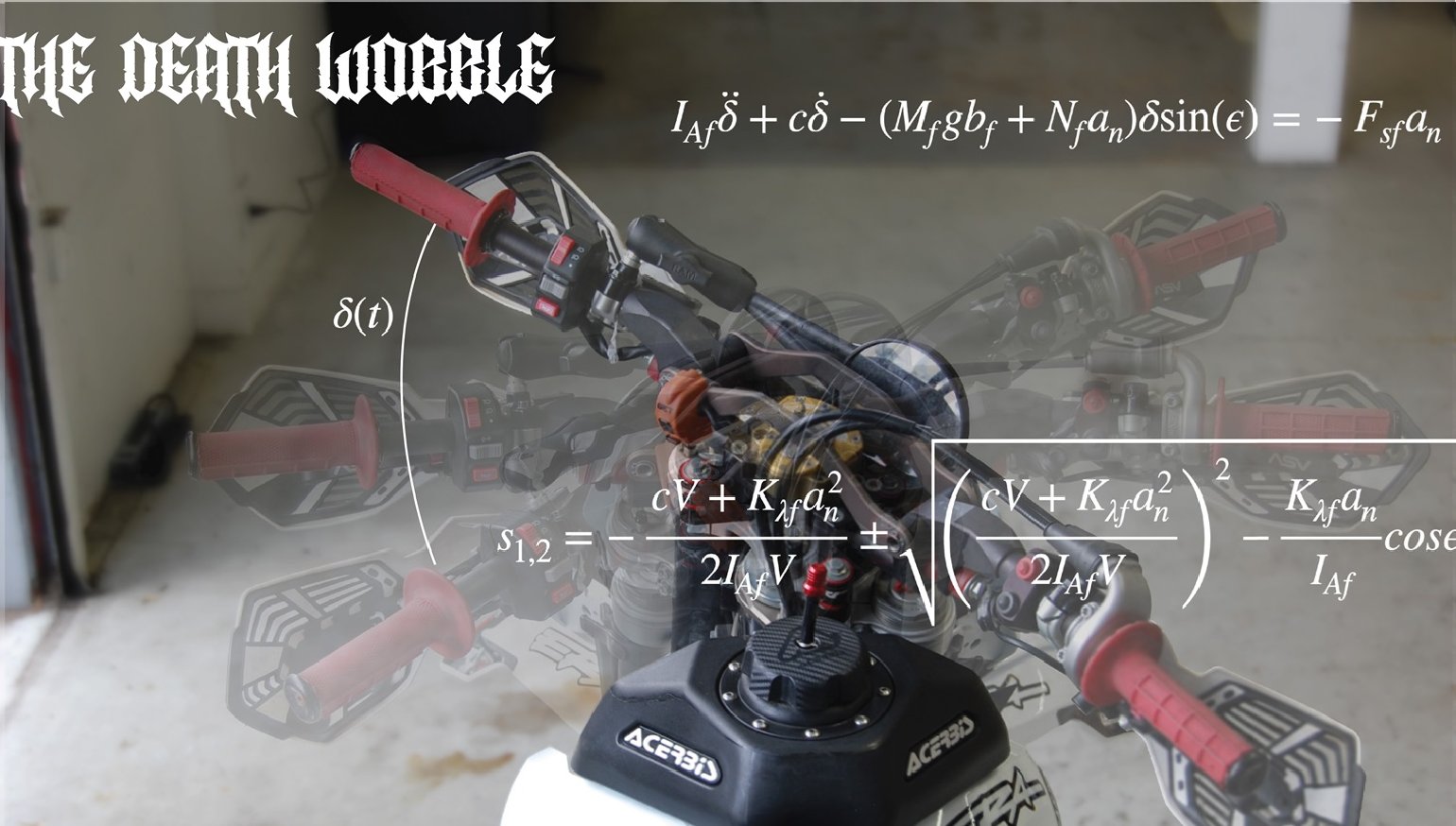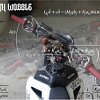Death wobble, speed wobble, head shake, tank slapper, Harley wobble — there are a few instabilities that can arise in motorcycles but only one has a slew of nicknames.
When you have a phenomenon that can cause accelerations typically only experienced by jet fighter pilots, it's going to get some attention. Let's take a look at what we know about these wobbles and what can be done to make sure you never have to be on the receiving end of this beast of a failure mode.
What is a death wobble?
A two-wheel vehicle is inherently unstable. The wobble is an egregious example of that lack of stability, producing violent shaking back and forth accelerations of the steering. You have probably seen this in videos of wheelies gone bad (like the one above). If the rider has the wheel at an angle to the direction of travel when it touches down, that can trigger the aggressive head shake. Yet there are also times when seemingly straight-line motion can set off a wobble. The desire to understand this phenomena started soon after the bicycle was invented.
In typically dorky fashion, as soon as mathematicians got their hands on bicycles they set out to make a mathematical formulation of what makes a bike stable and where things can go wrong. In 1899, Francis John Welsh Whipple was the first to write down a set of nonlinear differential equations that describe the motion of a two-wheeled vehicle and rider. Despite the deceptively simple nature of these equations, they could not be solved.
It took almost 70 years and a nonlinear and chaotic dynamics revolution before the complexities of these simple equations could be explained. This, combined with the advent of numerical simulations on computers in the 1970s, made possible a thorough understanding of the types of instabilities. After more than 50 years of scientific and engineering investigations, we now have a solid understanding of the physics behind the death wobble. After combing the literature on what has been accomplished, I can pass on to you the CliffsNotes version of what has been learned.
Three kinds of instabilities
Three instabilities are present in all motorcycles. Any a new rider is keenly aware of the most common instability: the tip over (capsizing).
If you're a fan of roadracing, you've seen plenty of examples of the second instability, called the weave. This is a mode where the front and rear wheel perform snake-like oscillations about straight forward movement. These oscillations are slow, typically once per second (1 Hz) and occur when you're going fast. (In the video below, you can see a long-lasting version of the weave that James Rispoli survived on his Harley-Davidson King of the Baggers race bike at Daytona in 2023.)
The third instability is the dreaded wobble, where the steering oscillates side to side much faster, typically five to 10 times per second (5-10 Hz). They occur at speeds you typically ride: 30 to 70 miles per hour.
What causes the speed wobble?
The speed wobble is initiated by a deflection of the front tire. It can also be initiated by rolling over a bump while turning with the front tire straight. The speed wobble becomes possible at a specific speed that is based on the properties of the tire, the motorcycle's trail, the distribution of mass around the steering head, and the rake (caster angle). The most important tire properties are the relaxation length (a measure of how fast the tire responds to changes, what we call how sticky the tire is) and the cornering stiffness (i.e. how good the tire is at maintaining its shape when experiencing lateral force).
The speed wobble is a one-tire phenomenon. It does not need two tires to happen. Think about a shopping cart with one wobbly wheel: This is the same phenomenon as the speed wobble on a two-wheeled motorcycle. The presence of the rear wheel, the rear motorcycle mass, and the rider only serve to change the details of the wobble.
Motorcycle manufacturers work really hard to create a bike that is designed to kill off the oscillations through damping. There is a speed range where this damping is minimal and this is the range of speed where you have to watch out for the wobble.
Avoiding and dealing with tank slappers
So what should you do about this? Based on the literature, two recommendations can be made — one for avoiding the problem, and one for dealing with it.
Make sure your motorcycle is operating within the intended parameters. Simulation of motorcycle design and testing has gotten so good that manufacturers know how to sniff out an unstable design. (There are some notable failures here; just ask the owners of Harley-Davidson Dyna models with rubber-mounted engines.) But the stability is very sensitive to parameters such as tire pressure, so little variations in these can trigger a wobble. If you got a wobble, the first thing to do is check your tire pressure. If the problem persists, check the specs on your forks and consider adding a steering damper.
Since the wobble danger only exists for a range of speeds, if you are experiencing a wobble while accelerating, slow down. If you get a wobble while slowing, speed up. This will push you out of the wobble danger zone. If your wobbles primarily occur while turning, get your front suspension checked to be sure there is no damage or something amiss. You can also consider adding a steering damper.
Note that there is no universal prescription for how to avoid a wobble. This is due to the highly nonlinear nature of the dynamics of a motorcycle. In nonlinear and chaotic systems, a small change in one parameter can have a large effect on the velocity range where a wobble might occur. You might know this property of chaotic systems by its common name, the Butterfly Effect. Some of the important parameters (in addition to the ones associated with the tire described above) are the mass of the front frame, the distance between the rear wheel and center of mass, the yaw inertia of the bike, the roll stiffness, the front wheel inertia and radius, and frame twist stiffness. And the rider and their response is also significant. So each bike and rider needs to be treated separately.

A speed wobble case study
I performed a numerical simulation of Whipple's equations for my 2022 KTM 500 EXC-F and found that the speed range of 32 to 48 miles per hour is particularly sensitive to wobble. The red curve in the graphic at right depicts the oscillations that can occur in that range (for those literati out there, this sudden onset of the oscillation is caused by a Hopf bifurcation).
I have a Scotts steering damper on the bike and you can see that increasing the steering damper coefficient suppresses the wobble (gray curve). This suppression can also happen by slowing below the critical velocity or speeding up to increase the stabilizing effect that comes from the gyroscopic properties of the front wheel.
If you want me to take a look at your bike and setup, reach out to me via Instagram and I can let you know if you may have a wobble problem waiting for you. For those of you looking to go down the rabbit hole on this (and this hole is deep, let me tell you) I suggest starting with V. Cossalter's book "Motorcycle Dynamics." If you want to start playing around with simulation but don't know how to numerically solve nonlinear problems and you have a Windows-based operating system, you can check out MBSim, a free software that allows you to upload your motorcycle’s parameters and simulate the instabilities. Check it out.







